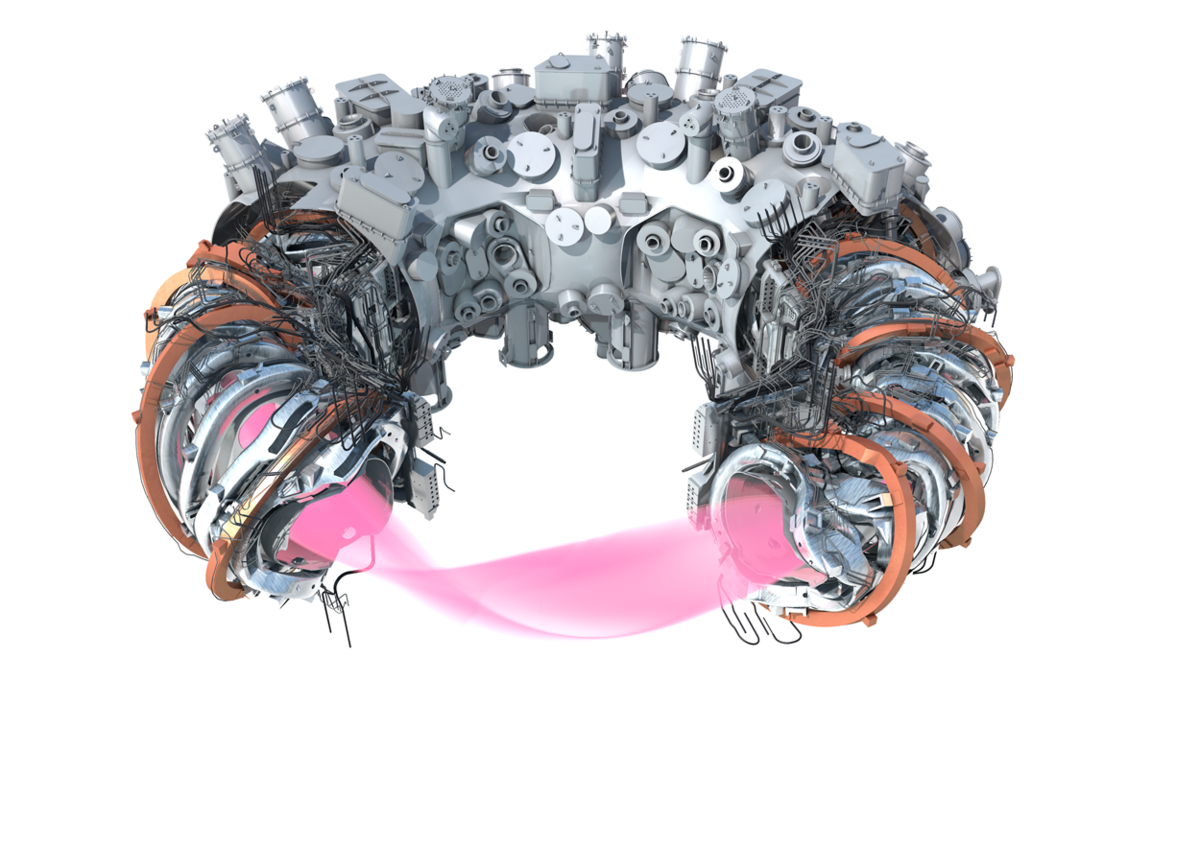Wendelstein 7-X, located in Greifswald (Germany), is the worldwide largest stellarator. It is equipped with modular superconducting coils, which enable steady state plasma operation. The stellarator serves as an alternative design concept to the tokamak regarding the future development of a fusion power plant.
Milestones
The main assembly of the Wendelstein 7-X stellarator at the Greifswald branch of IPP was completed in 2014. The first hydrogen plasma was achieved in December 2015.
The facility's official inauguration took place on 3 February 2016 in the presence of the former German Federal Chancellor Angela Merkel.
An important milestone was reached in February 2023: for the first time, a plasma with an energy conversion of 1.3 gigajoules was generated over eight minutes.
The preparation of experimental campaigns, theory and modelling is carried out in close co-operation with the EUROfusion consortium.
Research
The Max Planck Institute for Plasma Physics describes the facility's research goals as follows. Among other aims, researchers want to investigate the good particle confinement of the optimised magnetic field and investigate the particle transport under reactor-like conditions. Moreover, they want to produce and heat the plasma with effective heating methods. Another goal is the development of methods of impurity control and the investigation of impurity transport. You can find further information and more research objectives on the website of the Max Planck Institute for Plasma Physics.

Technical Data
- Major plasma radius: 5.5 metres
- Minor plasma radius: 0.53 metre
- Magnetic field: 3 tesla
- Pulse length: max. 30 minutes
- Plasma heating: 14 megawatts
- Plasma volume: 30 cubic metres
- Plasma mass: 5 - 30 milligrams
- Plasma mixture: Hydrogen, Deuterium
- Plasma temperature: 60 - 130 million degrees
- Plasma density: 3 × 10²⁰ particles per cubic metre